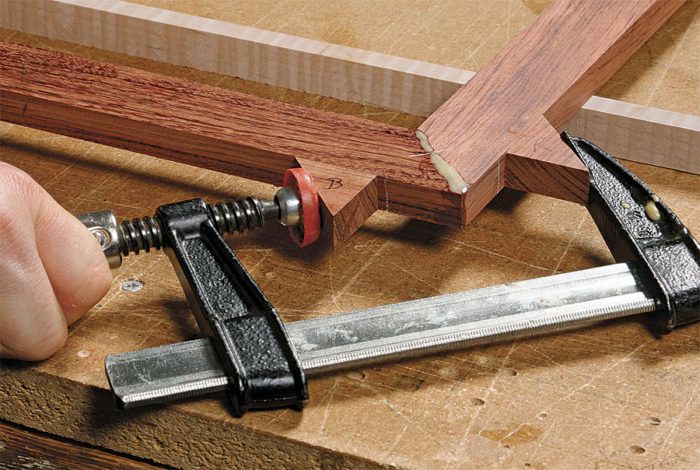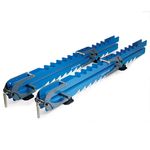Polyurethane Is My Go-to Glue
Veteran pro builds a strong case for using this misunderstood adhesive
Synopsis: If you’ve never considered polyurethane glue as a woodworking adhesive, it might be time to give it a try. Craig Thibodeau did, and he discovered that the glue’s lack of moisture makes it great for veneering, its inherent slipperiness gives it an advantage when fitting tight joinery, and its rigid glueline is a big plus when doing bent-lamination work.
For a long time, my go-to woodworking glue was yellow glue. Then a respected pro recommended that I try Gorilla Glue for veneering. Because of the glue’s lack of moisture, the sheets of veneer didn’t curl, which made the work easier. I also discovered that the glue created a very rigid glueline, a big plus with bent-lamination work. As I tried the product on other types of glue-ups, I soon discovered other advantages. Once I got through a short learning curve, I began to use polyurethane glue more and more.
Polyurethane is inherently slippery and contains no water. These are big advantages on almost all joints, but especially those that can be difficult to assemble.
There are two main downsides, one easy to deal with and one less so. The sticky squeeze-out is no problem if you apply less glue to start with and then let it dry before touching it. The other downside is that polyurethane glue underperforms in gappy joints. Unlike yellow glue, which has minor gap-filling ability, polyurethane has none, expanding to become featherweight foam in spaces bigger than 5 or 10 thousandths of an inch. This is why some woodworkers mistakenly think polyurethane glue lacks strength in general.
But in my experience, polyurethane glue—when used correctly—is every bit as strong as other glues, as long as your joinery is sound and clamping pressure is sufficient.
Today I use polyurethane glue for almost all of the joinery I produce. As a working pro, I wouldn’t do that unless it made serious sense. I encourage you to give it a try. It just might become your favourite, too. Polyurethane creates a much harder glue line, meaning you won’t get the raised gluelines that sometimes pop up on panels after a few years of wood movement. When dry, the squeeze-out is rigid and easy to remove.
For the full article, download the PDF below:
Fine Woodworking Recommended Products

Rockler Deluxe Panel Clamp

Dubuque Clamp Works Bar Clamps - 4 pack























Comments
I've been using it to build all of my panels for panel/frame construction plus any surface such as table tops. A big plus I find is the ease of clean-up and have never seen a "glue line" when finishing.
I've used it for regular glue-ups and it works OK. I don't find it an easy cleanup though, both clean up right after gluing and the alleged chisel or peel-off clean after drying. It might be OK when the final product isn't stained, but it does leave residue.
I'll try it for veneering based on Craig Thibideau's recommendation when I get to that for sure. I still don't find it an easy clean up compared to standard wood glue.
Log in or create an account to post a comment.
Sign up Log in